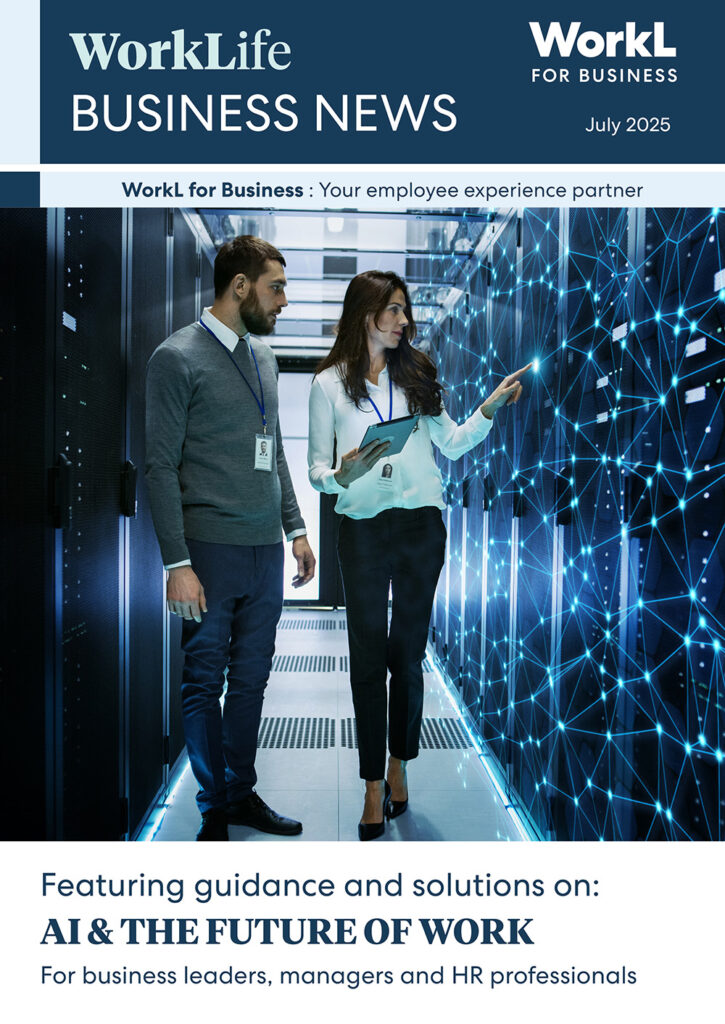Written by Hayley Meakes and Richard Nicholas, Get Fit For Business Ltd.
The AI revolution is well underway. But in many businesses, it’s underwhelming. Whilst leaders invest in the latest shiny object, employees are often reluctant to adopt to new ways of working and far too often the promise of transformation fizzles out.
But what if we’ve been asking the wrong question all along?
Instead of “How can AI make us more efficient?”, forward-thinking organisations are asking: “How can AI help us improve what we do, for the benefit of clients and staff?”
When AI is thoughtfully introduced, the return can be threefold: operational efficiency, reduced overheads, and a more engaged workforce. But only if purpose, people, and practicality are built in from the start.
The Problem: A Disconnect Between Trust and Technology
A report by Boston Consulting Group found that 70% of digital transformations fail to meet expectations often due to lack of integration, strategy, or stakeholder engagement. The result is often wasted budgets, disillusioned teams, and tools that gather dust.
At the heart of this is a critical oversight: If you’re going to change the business you’re going to have to first persuade the people doing the work why they should change too.
Employees resist tools they don’t trust. Leaders hesitate without clear wins. Businesses need to ensure that employees are skilled up in such a way that they can produce the easy, quick wins that inspire confidence and gain momentum.
A Simpler Way Forward: The Purpose–People–Practicality Model
Successful AI adoption isn’t about complexity—it’s about clarity. Here’s a three-step approach grounded in real-world results:
Purpose: Start with a business challenge that matters to your team. Burnout, backlogs, service delays – AI should solve for something that your people care about.
People: Get your team to design the solution they need (this is easier than you might think). After all – they understand how tasks are done today. Ask what could be improved, not replaced.
Practicality: Start small. Pilot one process. Measure outcomes like time saved, morale lifted, or accuracy improved. Take employee feedback seriously.
And remember introducing AI is about more than tools. It’s about creating a workplace culture where people feel empowered, not replaced.
Five Quick Wins to Consider Today
Automate the admin: Look at scheduling, invoicing, or routine reports. These are the sorts of tasks that most people would rather avoid.
Make meetings smarter: Use tools that summarise, track action points and set agendas for future meetings.
Support your staff: Try AI-guided coaching that help staff when they are stuck. Better still, allow staff to gain certification in valuable AI skills they learn.
Boost onboarding: AI-powered Q&A tools trained on your policies and processes can get new hires up to speed faster.
Share success stories: When AI helps a team succeed, don’t just highlight the AI, but the whole team that was involved in training it.
Building a Culture Where AI Can Thrive
Introducing AI successfully depends on more than tech training or pilots. It’s about nurturing a workplace where people feel motivated, supported, and proud of their role. Here are six proven strategies, drawn from WorkL’s “Six Steps to Workplace Happiness,” that directly support AI success:
- Reward & Recognition – Recognise and reward how teams are using AI to improve their work. Celebrate learning, experimentation, and wins big or small to build momentum.
- Information Sharing – Be transparent about why AI is being introduced, what it will change, and how it supports your strategy. When employees understand the context, they are more likely to contribute and innovate.
- Empowerment – Involve employees in choosing and testing AI tools. Their feedback will make implementation stronger and ensure tools are useful, not just imposed.
- Wellbeing – Use AI to reduce burnout, not increase pressure. Automating low-value tasks should give employees more time for meaningful work and more headspace, not less.
- Instilling Pride – Link AI use to a wider purpose. Whether it’s improving customer experience or reducing waste, show how smart tech helps the business do good—and that your people are at the heart of that change.
- Job Satisfaction – Make AI part of personal growth. Offer training, support experimentation, and make space for new roles to evolve. Employees who see a future with AI are more likely to stay and engage.
Addressing the Fear Factor
AI anxiety is real. Employees worry about replacement; managers fear missteps. Reassurance lies in transparency:
Be clear: AI is a tool, for helping staff work better.
Training: Confidence comes from competence and new skills.
Highlight human value: Celebrate roles that AI can never replace—like creativity, empathy, and judgement.
The Bottom Line
AI in the workplace is no longer optional but don’t expect your staff to welcome it unless they get a benefit from it as well. When implemented with purpose, built for people, and in a practical way that your team can relate to, it can deliver a real Return on investment: not just in productivity, but also in collaboration and creativity.
WorkLife Business News

This article was originally featured in the July 2025 edition of WorkLife Business News which you can view here!
Subscribe to receive future editions of WorkLife Business News here!
Explore other articles featured in previous editions here!

